Hypoallergenic Dogs That Don't Bark Much: The Ultimate Guide for Peaceful Living Finding the perfect companion: hypoallergenic and quiet breeds offer the best of both worlds Finding the perfect companion: hypoallergenic and quiet breeds offer the best of both worldsFor many people seeking canine companionship, the ideal dog combines hypoallergenic qualities with a naturally quiet temperament. Whether you live in an apartment, have close neighbors, or simply prefer a more peaceful home environment, choosing a breed that doesn't bark excessively while being gentle on allergies can transform your living experience. This comprehensive guide explores the best hypoallergenic dogs that are known for their calm, quiet nature. What Makes Dogs Hypoallergenic?↑ Back to Table of ContentsBefore diving into specific breeds, it's important to understand that no dog is 100% hypoallergenic. The term "hypoallergenic" refers to dogs that produce fewer allergens than other breeds. These allergens are primarily found in dander (dead skin cells), saliva, and urine rather than the fur itself. Key Point: Hypoallergenic dogs typically have hair instead of fur, which grows continuously and sheds minimally. This characteristic significantly reduces the amount of dander released into the environment, making them more suitable for allergy sufferers. Dogs with single coats, non-shedding coats, or hairless breeds are generally considered more hypoallergenic. The protein Can f 1, found in dog saliva and skin, is the primary allergen that affects most people with dog allergies. Levels of Hypoallergenicity🟢 Highly HypoallergenicIdeal for moderate to severe allergies:
🟡 Moderately HypoallergenicSoft Coated Wheaten Terrier, Chinese Crested (Powderpuff) - suitable for mild to moderate allergies. 🔴 Partially HypoallergenicBasenji - low dander due to cat-like grooming, best for mild allergies. Important: Individual dogs vary in allergen production. Always spend time with the specific dog before adoption, especially with moderate to severe allergies. Understanding Why Dogs Bark and What Makes Some Breeds Quieter↑ Back to Table of ContentsBarking is a natural form of canine communication, but some breeds are genetically predisposed to be quieter than others. Understanding the reasons behind barking can help you choose and train a quieter companion. Common Reasons for Excessive BarkingDogs typically bark due to alerting behaviors, territorial instincts, attention-seeking, anxiety or boredom, excitement, or response to other dogs. Breeds developed for guarding or herding purposes tend to be more vocal, while companion breeds bred specifically for indoor living are generally quieter. Characteristics of Naturally Quiet BreedsQuiet dog breeds typically share several traits. They were bred as companion animals rather than working dogs, possess calm and gentle temperaments, have lower energy levels requiring moderate exercise, show less territorial behavior, and demonstrate independence without constant attention-seeking. Top 10 Hypoallergenic Dogs That Don't Bark Much↑ Back to Table of Contents1. Basenji: The African Barkless Dog The Basenji's unique larynx structure prevents traditional barking The Basenji's unique larynx structure prevents traditional barkingThe Basenji holds the unique distinction of being virtually barkless. Originating from Central Africa, this ancient breed produces a distinctive yodel-like sound called a "baroo" due to its unusually shaped larynx. Basenjis are intelligent, independent, and cat-like in their grooming habits. In terms of allergens, Basenjis produce minimal dander due to their short, fine coat and cat-like self-grooming behavior. They also have low drooling tendencies, which reduces contact with the Can f 1 allergen found in saliva. However, individual Basenjis may vary in shedding patterns, with some producing more dander than others.
Important Notes:
2. Soft Coated Wheaten Terrier: The Friendly Terrier Exception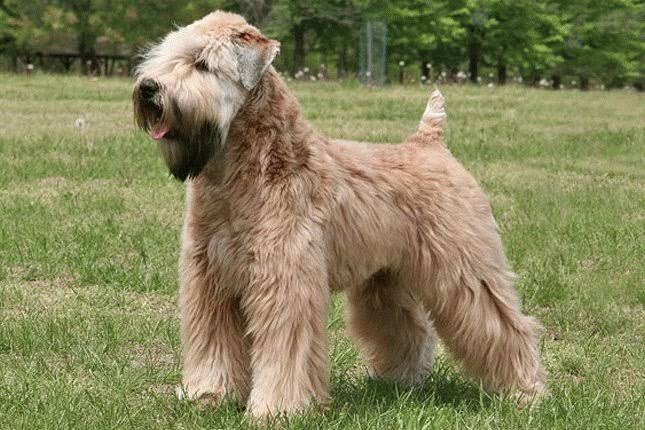 Wheatens are notably quieter than most terrier breeds Wheatens are notably quieter than most terrier breedsUnlike many terriers known for excessive barking, the Soft Coated Wheaten Terrier is remarkably moderate in its vocalizations. Originally bred in Ireland as an all-purpose farm dog, this breed combines the terrier's intelligence and energy with a friendlier, less aggressive temperament. The Wheaten's soft, silky coat is hypoallergenic because it consists of a single layer without an undercoat, which significantly reduces shedding and dander production. Their coat grows continuously like human hair, requiring regular grooming but producing minimal allergens.
Care Tips: Wheatens require daily brushing to prevent matting and professional grooming every 6-8 weeks. They're energetic and need regular exercise to maintain their calm, quiet demeanor indoors. Proper training and socialization help minimize their natural terrier tendency to bark. 3. Bichon Frise: The Cheerful Companion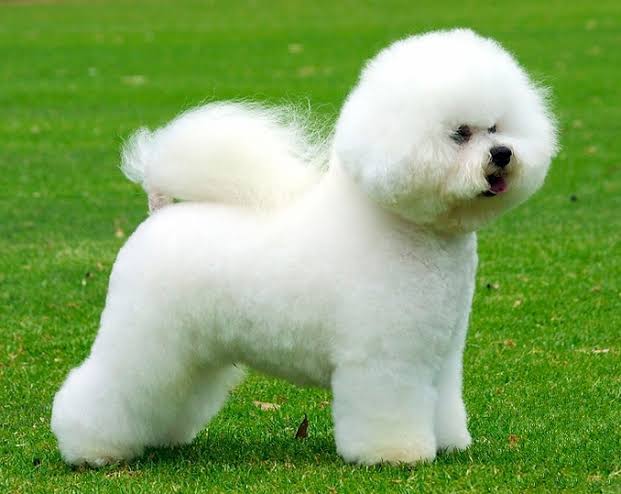 Bichons are known for their fluffy white coats and gentle temperament Bichons are known for their fluffy white coats and gentle temperamentThe Bichon Frise is one of the most popular hypoallergenic breeds, combining a cheerful disposition with minimal shedding. Originally from the Mediterranean region, these small dogs were favorites of European royalty and have been cherished companions for centuries. Bichons have a unique double coat of curly white hair that traps dander and prevents it from spreading into the environment. While they're not excessive barkers by nature, they will alert their owners to unusual sounds. With proper training, they remain calm and quiet in most situations.
Temperament Notes: Bichons are playful, intelligent, and eager to please. They're excellent with children and other pets. However, they can develop separation anxiety if left alone for extended periods, which may lead to excessive barking. Crate training and ensuring they have company most of the time helps maintain their quiet nature. 4. Chinese Crested: The Hairless Wonder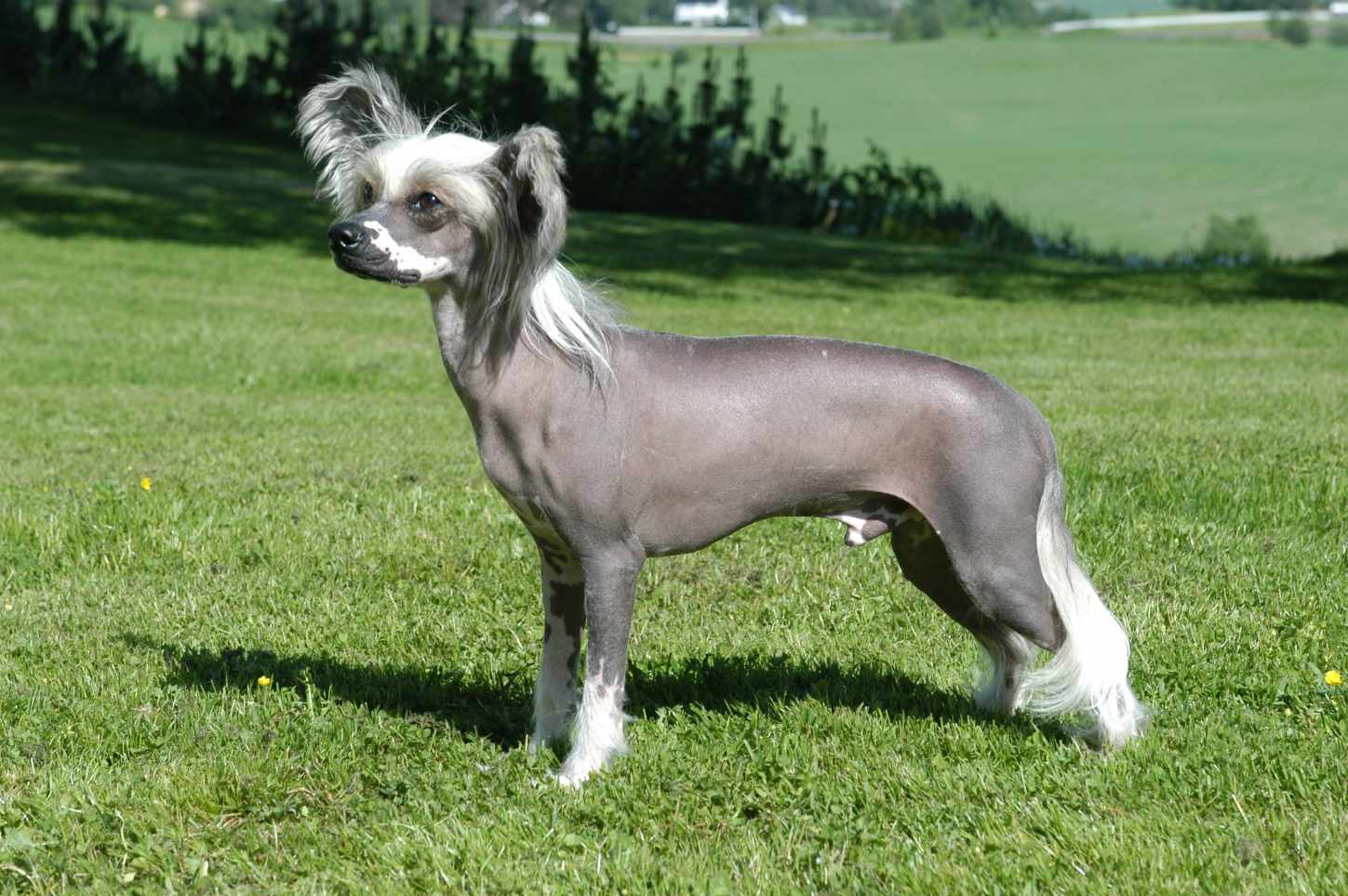 Chinese Crested comes in both hairless and powderpuff varieties Chinese Crested comes in both hairless and powderpuff varietiesThe Chinese Crested comes in two varieties: hairless and powderpuff. Both are exceptionally quiet and affectionate. The hairless variety is particularly suited for severe allergy sufferers, as they have minimal hair and produce very little dander. These dogs are alert but not yappy, making them ideal for apartment living. Despite their exotic appearance, Chinese Cresteds are gentle, loving companions that form strong bonds with their families. They're naturally reserved and prefer to observe rather than vocalize unnecessarily.
Special Care: Hairless Chinese Cresteds require regular skin care including bathing, moisturizing, and sun protection with dog-safe sunscreen. They're sensitive to extreme temperatures. Powderpuff varieties need regular brushing to prevent matting. Both varieties are gentle with children and make excellent therapy dogs. 5. Havanese: Cuba's National Dog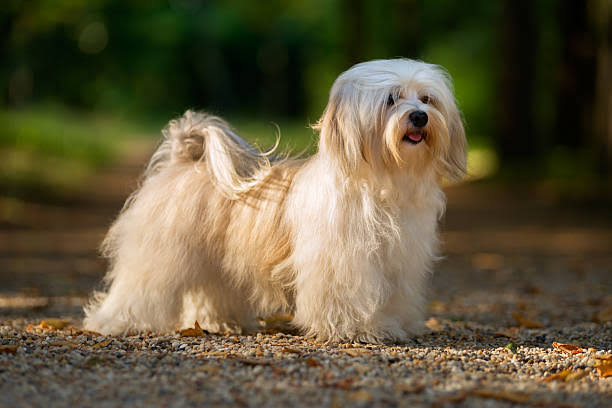 The Havanese is known for its silky coat and sociable nature The Havanese is known for its silky coat and sociable natureThe Havanese is Cuba's only native breed and has been a cherished companion for centuries. These small, sturdy dogs are known for their long, silky coats and exceptionally friendly personalities. Unlike many small breeds, Havanese are not naturally yappy and bark primarily to alert their owners or when seeking attention. Their coat is often called "Havana silk" due to its fine texture. While it requires regular grooming, the single-layer coat sheds minimally and produces little dander, making them suitable for allergy sufferers.
Personality Highlights: Havanese are often called "Velcro dogs" because they love being close to their owners. They're intelligent, social, and get along well with children and other pets. Early training helps prevent separation anxiety and keeps barking to a minimum. They make excellent therapy dogs due to their gentle, empathetic nature. 6. Maltese: The Elegant Lap Dog Maltese are known for their long, flowing white coats Maltese are known for their long, flowing white coatsThe Maltese is one of the oldest toy breeds, with a history spanning over 2,000 years. These elegant dogs were favorites of ancient Greek and Roman aristocracy. Despite their small size, Maltese are confident and fearless, yet they maintain a gentle, quiet demeanor when properly socialized. Their long, silky white coat grows continuously without an undercoat, resulting in minimal shedding and dander production. This makes them one of the best choices for people with allergies who want a small, affectionate companion.
Training Tips: Maltese are intelligent and responsive to positive reinforcement training. Early socialization helps prevent them from becoming overly protective or yappy. They're excellent for seniors and apartment dwellers due to their small size and moderate exercise needs. Regular dental care is essential as they're prone to dental issues. 7. Shih Tzu : The Imperial Companion Shih Tzus were bred as companion dogs for Chinese royalty Shih Tzus were bred as companion dogs for Chinese royaltyThe Shih Tzu was bred specifically as a companion dog for Chinese royalty, never for hunting or guarding. This centuries-long breeding for companionship has resulted in a breed that is naturally calm, quiet, and content to be with their family. They're one of the least vocal small breeds. Their long, flowing double coat requires significant grooming but sheds minimally, making them highly hypoallergenic. Many owners keep them in shorter "puppy cuts" for easier maintenance.
Ideal For: Shih Tzus are perfect for calm households, seniors, and first-time dog owners. They require minimal exercise and are content with short walks and indoor play. Their friendly nature makes them excellent with children and other pets. However, they need regular grooming and eye care to prevent tear staining. 8. Portuguese Water Dog Water Dog: The Athletic Companion Portuguese Water Dogs are intelligent and energetic Portuguese Water Dogs are intelligent and energeticThe Portuguese Water Dog is the largest breed on this list, originally bred to assist Portuguese fishermen. Despite their working dog heritage, they're moderate barkers when properly exercised. They gained fame as the breed chosen by President Obama's family due to their hypoallergenic qualities. Their tight, curly or wavy coat doesn't shed and traps dander effectively, making them suitable for people with allergies. They're intelligent, trainable, and make excellent family dogs for active households.
Exercise Requirements: Portuguese Water Dogs need significant daily exercise including swimming, running, or interactive play. When their exercise needs are met, they're calm and quiet indoors. They excel in dog sports like agility and obedience. Best suited for active families with yards or access to outdoor spaces. 9. Xoloitzcuintli: The Ancient Mexican Hairless The Xolo is one of the world's oldest and rarest dog breeds The Xolo is one of the world's oldest and rarest dog breedsThe Xoloitzcuintli (pronounced "show-low-eats-queent-lee"), also known as the Xolo or Mexican Hairless Dog, is one of the world's oldest and rarest breeds with a history spanning over 3,000 years. This ancient breed was considered sacred by the Aztecs and is now the national dog of Mexico. Xolos are naturally reserved and calm dogs that don't bark without reason. While they are protective and will alert their owners to genuine threats, they are not prone to excessive or unnecessary barking. Their intelligent and loyal nature makes them excellent watchdogs that vocalize only when truly necessary. The hairless variety produces virtually no dander, making them ideal for people with severe dog allergies. They come in three sizes (toy, miniature, and standard), offering options for different living situations.
Special Care Note: Hairless Xolos require sun protection with dog-safe sunscreen and regular bathing to maintain skin health. They are warm to the touch and were historically used as "bed warmers" by ancient civilizations. Despite their ancient origins, they adapt well to modern living and form strong bonds with their families. They can be reserved with strangers but are devoted to their owners. 10. Bolognese: The Rare Italian Companion The Bolognese is a small, fluffy companion breed from Italy The Bolognese is a small, fluffy companion breed from ItalyThe Bolognese is a small, rare breed originating from Bologna, Italy, with a history dating back over 2,000 years. Once the cherished companion of Italian nobility during the Renaissance, this breed was gifted among royalty including Catherine the Great and Maria Theresa of Austria. Unlike many small breeds known for yapping, the Bolognese is remarkably calm and not prone to excessive barking. While they will alert their owners to unusual sounds or visitors, they are generally quiet and reserved. Their deeper bark (unusual for their size) is used sparingly and only when truly warranted. Their fluffy white coat is entirely hypoallergenic, consisting of a single layer without an undercoat. The coat requires regular grooming but sheds minimally, making them excellent for allergy sufferers seeking a small, affectionate companion.
Family Note: Bolognese dogs are devoted companions that form strong bonds with their families. They can suffer from separation anxiety if left alone for extended periods and thrive best in homes where someone is present most of the time. They're gentle with children but may be too delicate for very young, rough children. Their calm, quiet nature makes them perfect for retirees and quiet households. Comprehensive Breed Comparison↑ Back to Table of ContentsTo help you make an informed decision, here's a detailed comparison of all the hypoallergenic quiet breeds discussed:
Training Tips for Maintaining Quiet Behavior↑ Back to Table of Contents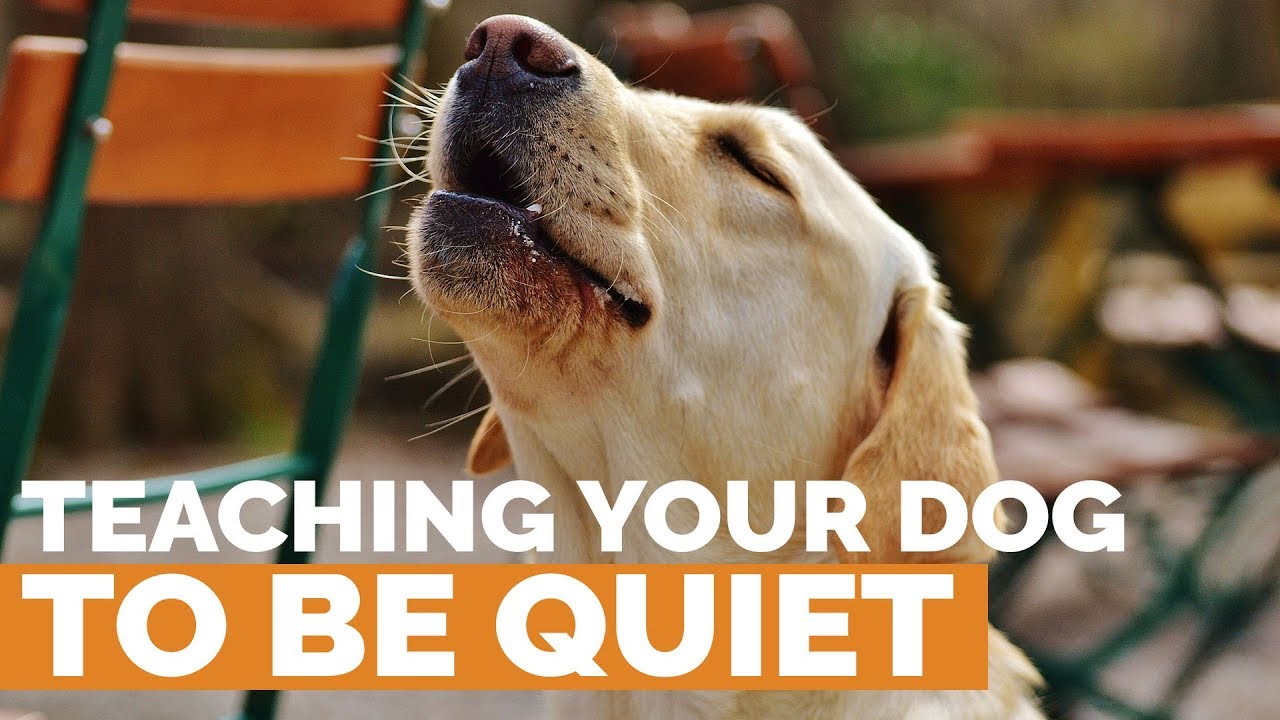 Positive reinforcement is key to maintaining quiet behavior Positive reinforcement is key to maintaining quiet behaviorEven naturally quiet breeds can develop barking habits if not properly trained and socialized. Here are essential strategies for ensuring your hypoallergenic companion remains peaceful: Early SocializationProper socialization during the critical period (3-14 weeks of age) helps prevent fear-based barking later in life. Expose your puppy to various people, animals, sounds, and environments in positive, controlled settings. Well-socialized dogs are more confident and less likely to bark excessively at unfamiliar stimuli. Positive Reinforcement TrainingThe "Quiet" Command Training ProcessStep 1: Wait for your dog to bark naturally at something (doorbell, passing dog, etc.) Step 2: Allow 2-3 barks, then hold a treat near their nose Step 3: When they stop barking to sniff the treat, say "Quiet" and immediately reward them Step 4: Gradually increase the duration of quiet time before giving the reward Step 5: Practice regularly in different situations until the command becomes reliable Environmental ManagementReduce triggers that cause unnecessary barking by closing curtains or blinds if your dog barks at passersby, using white noise machines to mask outside sounds, creating a comfortable, secure space where your dog feels safe, and providing adequate mental stimulation through puzzle toys and training games. A mentally stimulated dog is a quieter dog. Exercise and Mental StimulationMany barking issues stem from pent-up energy or boredom. Even breeds with lower exercise requirements need daily physical activity and mental challenges. Regular walks, play sessions, and training exercises help prevent frustration-based vocalizations. Professional Tip: Never yell at your dog for barking. They may interpret your shouting as you "joining in" their barking, which can reinforce the behavior. Instead, remain calm and use positive reinforcement when they're quiet. Living with Hypoallergenic Quiet Dogs: What to Expect↑ Back to Table of ContentsGrooming RequirementsMost hypoallergenic dogs have hair rather than fur, which requires regular grooming to prevent matting and maintain their hypoallergenic qualities. Professional grooming every 6-8 weeks is typically recommended for breeds like the Bichon Frise, Havanese, and Soft Coated Wheaten Terrier. Daily brushing may be necessary for longer-coated breeds like the Bolognese and Maltese. Allergy ManagementTo maximize the hypoallergenic benefits of your quiet companion, vacuum frequently with a HEPA filter, wash your dog's bedding weekly in hot water, bathe your dog every 2-4 weeks to reduce dander buildup, use air purifiers in main living areas, and establish dog-free zones, particularly in bedrooms. Even with hypoallergenic breeds, maintaining a clean environment is crucial for managing allergies effectively. Health ConsiderationsDifferent breeds have specific health concerns to be aware of. Hairless breeds like Xolos and Chinese Cresteds need sun protection and skin care. Small breeds can be prone to dental issues requiring regular dental care. The Bolognese may experience luxating patellas, and many small breeds are susceptible to tear staining. Regular veterinary check-ups and breed-specific preventive care are essential. Choosing the Right Breed for Your Lifestyle↑ Back to Table of ContentsConsider These Factors:Living Space: Smaller breeds like Bolognese, Chinese Crested, and Maltese are perfect for apartments, while medium breeds like Portuguese Water Dogs need more space. Activity Level: Match the dog's energy to your lifestyle. Basenjis, Wheatens, and Portuguese Water Dogs need more exercise than Shih Tzus, Bolognese, or Chinese Cresteds. Grooming Commitment: High-maintenance coats require significant time and financial investment. Consider low-maintenance breeds like Basenji or Xoloitzcuintli if grooming is a concern. Family Dynamics: Some breeds are better with children (Havanese, Bichon Frise) while others prefer quieter adult households (Bolognese, Chinese Crested). Time Availability: All dogs need attention, but some breeds like the Basenji and Xoloitzcuintli are more independent than velcro breeds like the Havanese and Bolognese. Allergy Severity: For severe allergies, hairless breeds (Xoloitzcuintli, Chinese Crested hairless variety) produce the least dander. Common Misconceptions About Quiet Dogs↑ Back to Table of ContentsMyth 1: Quiet Dogs Don't Need TrainingReality: Even naturally quiet breeds benefit from training and socialization. Training strengthens the bond between you and your dog and prevents potential behavioral issues. Myth 2: All Small Dogs Are YappyReality: While some small breeds are vocal, many toy and small breeds on this list (Bolognese, Chinese Crested, Maltese, Havanese) are exceptionally quiet when properly raised and trained. Myth 3: Quiet Dogs Are BoringReality: Quiet doesn't mean inactive or unengaging. These breeds are playful, affectionate, and entertaining—they simply express themselves without excessive barking. Myth 4: Hypoallergenic Means No Allergic ReactionsReality: Hypoallergenic breeds produce fewer allergens but aren't completely allergen-free. People with severe allergies should spend time with the specific breed before committing to adoption. Myth 5: Hairless Dogs Don't Need Any GroomingReality: Hairless breeds like Xoloitzcuintli and Chinese Crested require regular skin care, including bathing, moisturizing, and sun protection. Their grooming needs are different but not necessarily less demanding. Frequently Asked Questions↑ Back to Table of ContentsWhat is the quietest hypoallergenic dog breed?
The Basenji is considered the quietest hypoallergenic dog as it physically cannot bark due to its unique larynx structure. Instead, it produces a yodel-like sound called a "baroo." The Bolognese is another exceptionally quiet option, known for being calm and not prone to unnecessary barking despite being alert.
Are there large hypoallergenic dogs that don't bark much?
Yes, the Portuguese Water Dog is a larger hypoallergenic breed (16-27 kg / 35-60 lbs) known for moderate barking. Standard Poodles are another larger option, though they're not as naturally quiet as the Portuguese Water Dog. The Xoloitzcuintli also comes in a standard size (up to 25 kg / 55 lbs). All these breeds require regular exercise and mental stimulation to maintain calm behavior.
Can I train any dog to be quiet?
While training can significantly reduce barking in any breed, genetics play a major role in vocalization tendencies. Breeds developed for guarding or alerting will always have stronger barking instincts than companion breeds. Starting with a naturally quiet breed makes training much easier and more effective. Proper socialization, positive reinforcement, and addressing the root causes of barking are essential for success.
Are quiet dogs good for apartment living?
Quiet dogs are generally excellent for apartment living, but barking level is just one factor to consider. You should also evaluate the breed's exercise needs, size, and energy level. The Bolognese, Chinese Crested, Havanese, Maltese, and Shih Tzu are particularly well-suited for apartments due to their quiet nature, moderate exercise needs, and calm indoor behavior.
What's the difference between hair and fur on dogs?
While chemically similar, dog hair and fur differ in growth cycles. Hair grows continuously and has a longer growth phase, resulting in minimal shedding—similar to human hair. Fur has a shorter growth cycle and sheds regularly with seasonal changes. Dogs with hair (like Poodles, Maltese, and Havanese) are considered more hypoallergenic because they shed less dander into the environment.
Do quiet dogs still alert their owners to danger?
Yes, most quiet dogs will still alert their owners to unusual or threatening situations—they're simply more discerning about when to vocalize. Breeds like the Basenji, Xoloitzcuintli, and Bolognese are alert and aware of their surroundings but reserve their vocalizations for genuinely important situations rather than every minor stimulus. This makes their alerts more meaningful when they do occur.
Are hypoallergenic dogs more expensive?
Hypoallergenic breeds often cost more initially due to higher demand and specialized breeding. Prices typically range from $1,000 to $3,000 or more from reputable breeders. Rare breeds like the Xoloitzcuintli and Bolognese may cost even more. Additionally, many hypoallergenic breeds require regular professional grooming, which can cost $50-$100 per session every 6-8 weeks. However, adoption from rescue organizations can be more affordable while still providing a hypoallergenic companion.
Can senior citizens handle hypoallergenic quiet dogs?
Many hypoallergenic quiet breeds are excellent for seniors. The Havanese, Maltese, Shih Tzu, Chinese Crested, and especially the Bolognese are particularly suitable due to their small size, moderate exercise needs, and gentle temperaments. However, seniors should consider grooming requirements and choose breeds that match their physical capabilities. Some breeds may be better suited to seniors who can manage or afford professional grooming services.
Final Considerations Before Bringing Home Your Quiet Companion The right breed can bring years of peaceful companionship The right breed can bring years of peaceful companionshipChoosing a hypoallergenic dog that doesn't bark much requires careful consideration of your lifestyle, living situation, and personal preferences. Always spend quality time with your potential companion before adoption—observe their temperament, energy level, and vocalization patterns in different situations. Before bringing your dog home, prepare your space, purchase necessary supplies (food, bowls, leash, grooming tools), and arrange veterinary care. For hairless breeds, invest in dog-safe sunscreen and moisturizing products. Remember that dogs live 10-18+ years and require daily care and financial commitment—annual costs typically range from $1,000 to $2,500 or more. Important Reminder: Every dog is an individual. While breed characteristics provide general guidelines, individual personality, early socialization, and training significantly influence behavior. A naturally quiet breed can develop barking habits with improper training, while traditionally vocal breeds can learn to be quieter with proper guidance. ConclusionFinding a hypoallergenic dog that doesn't bark much is entirely possible with the right breed selection and proper training. From the truly barkless Basenji to the exceptionally calm Bolognese, the gentle Havanese, and the ancient Xoloitzcuintli, numerous breeds combine hypoallergenic qualities with naturally quiet temperaments. The key to success lies in matching a breed's characteristics to your lifestyle, proper socialization and training, regular grooming, adequate exercise, and creating a calm environment. Whether you're an apartment dweller, allergy sufferer, or simply prefer a quieter household, the breeds in this guide offer excellent options. Your perfect quiet, hypoallergenic companion is out there waiting for you—and with this guide, you're well-equipped to find them. References and Further Reading↑ Back to Table of Contents
| |||||||||||||||||||||||||||||||||||||||||||||||||||||||||||||||||||||||||||||||||||||||||||||||||||||||||||||||||||||||||||||||||||||||||||||||||||||||||||||||||||||||||||||||||||||||||||||||||||||||||||||||||||||||||||||||||||||||||||||||||||||||||||||||||||||||||||||||||||||||||||||||||
|
| |||||||||||||||||||||||||||||||||||||||||||||||||||||||||||||||||||||||||||||||||||||||||||||||||||||||||||||||||||||||||||||||||||||||||||||||||||||||||||||||||||||||||||||||||||||||||||||||||||||||||||||||||||||||||||||||||||||||||||||||||||||||||||||||||||||||||||||||||||||||||||||||||
| Переглядів: 64 | | | |||||||||||||||||||||||||||||||||||||||||||||||||||||||||||||||||||||||||||||||||||||||||||||||||||||||||||||||||||||||||||||||||||||||||||||||||||||||||||||||||||||||||||||||||||||||||||||||||||||||||||||||||||||||||||||||||||||||||||||||||||||||||||||||||||||||||||||||||||||||||||||||||
| Total comments: 0 | |